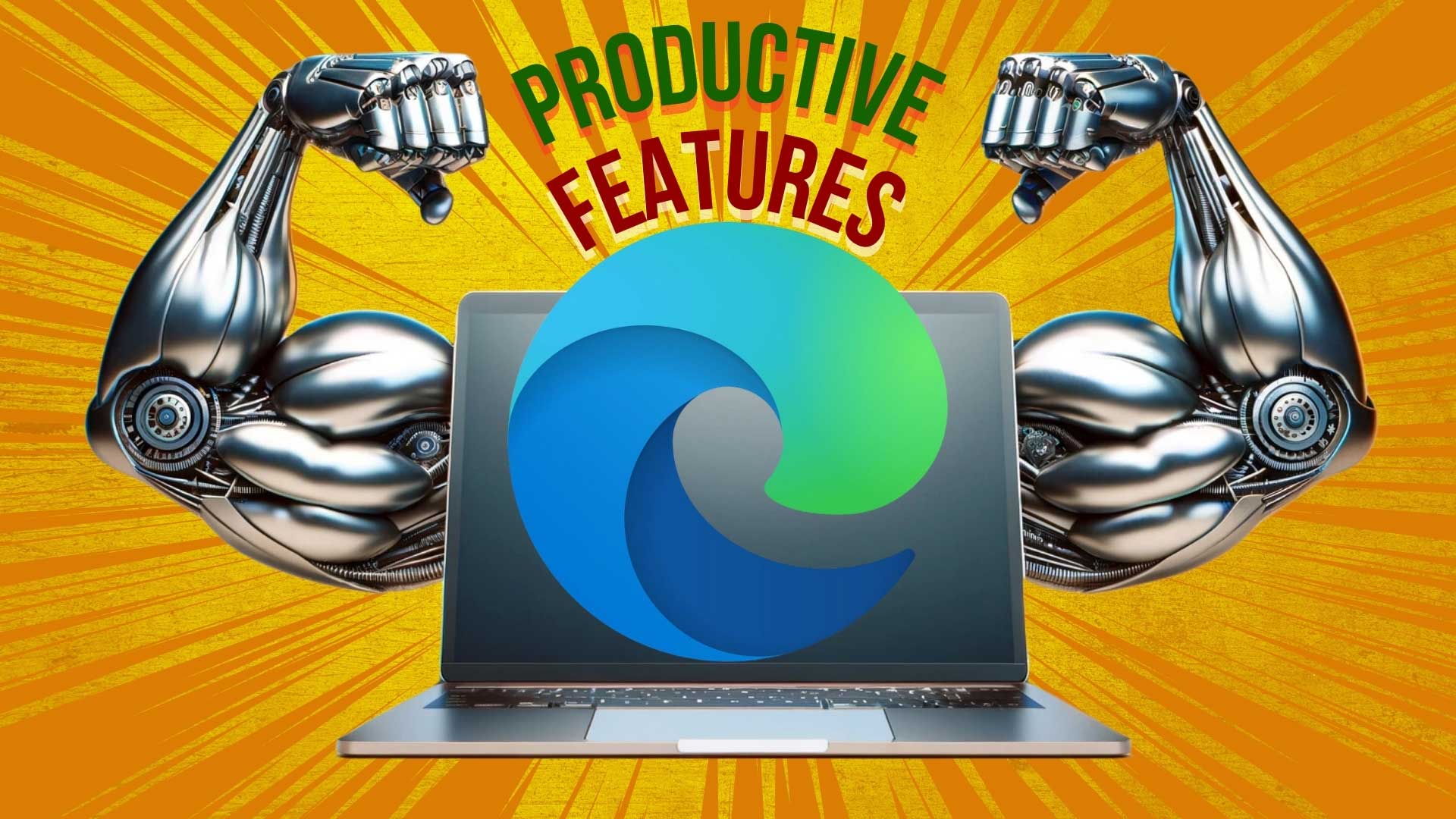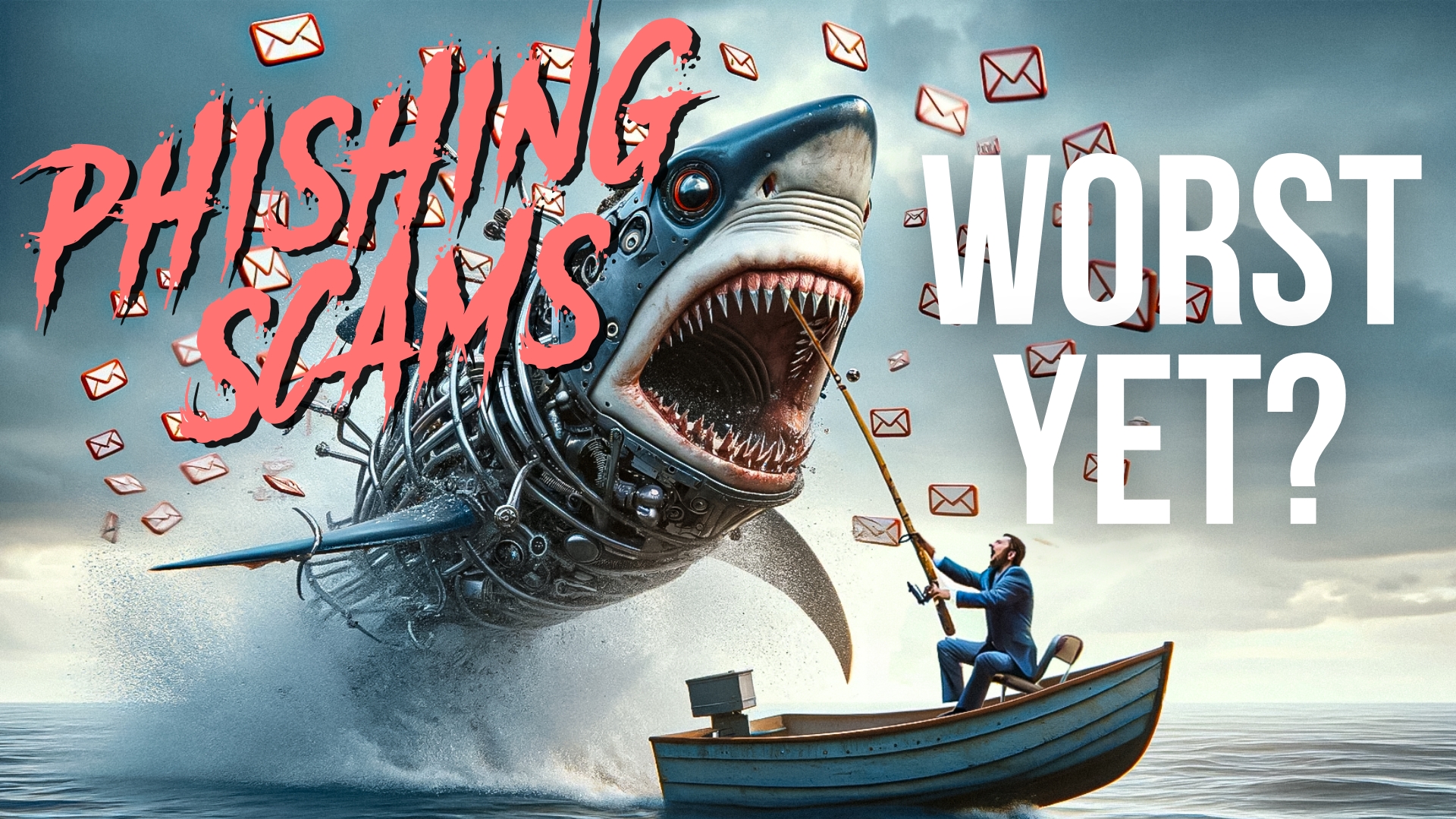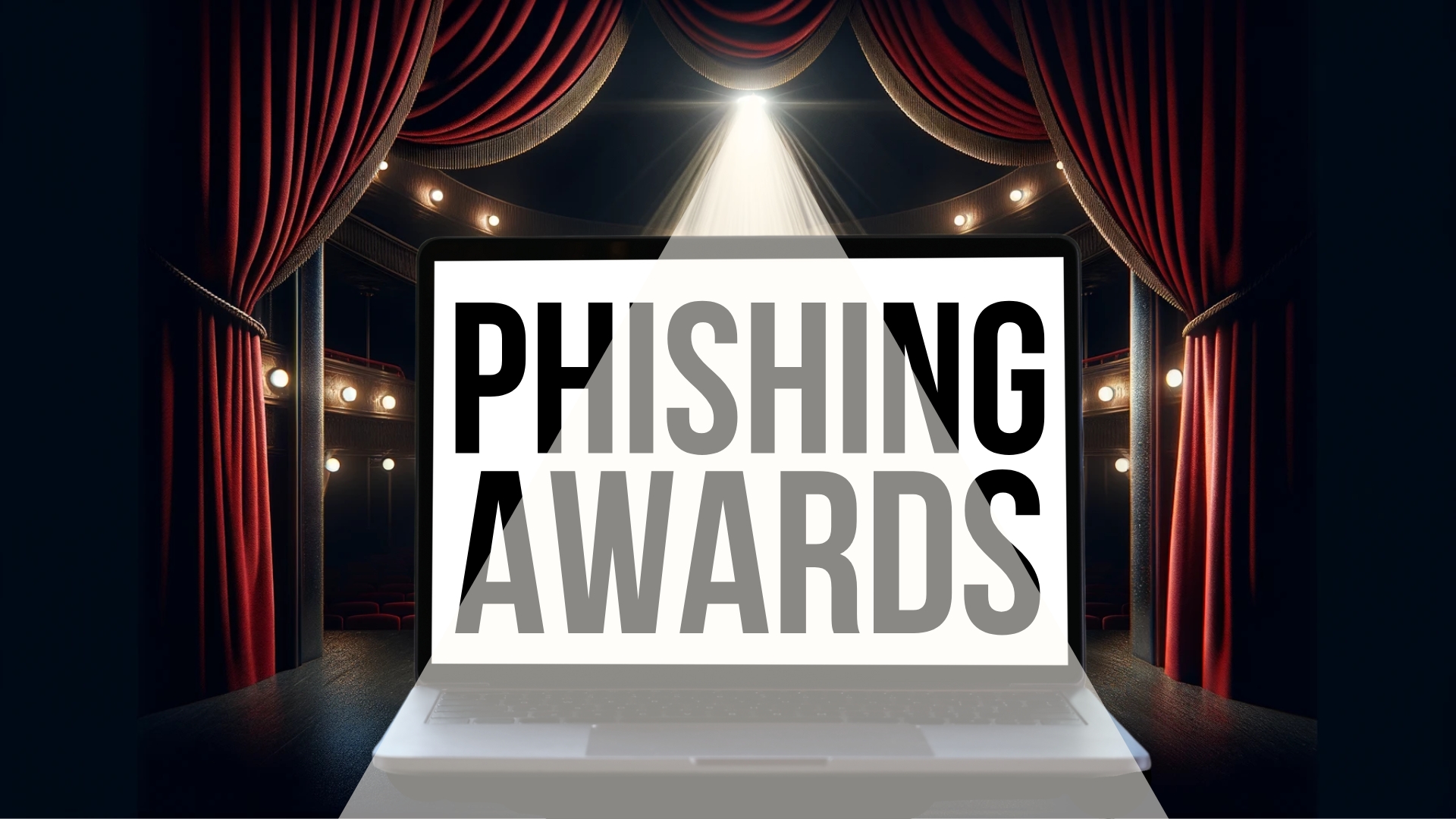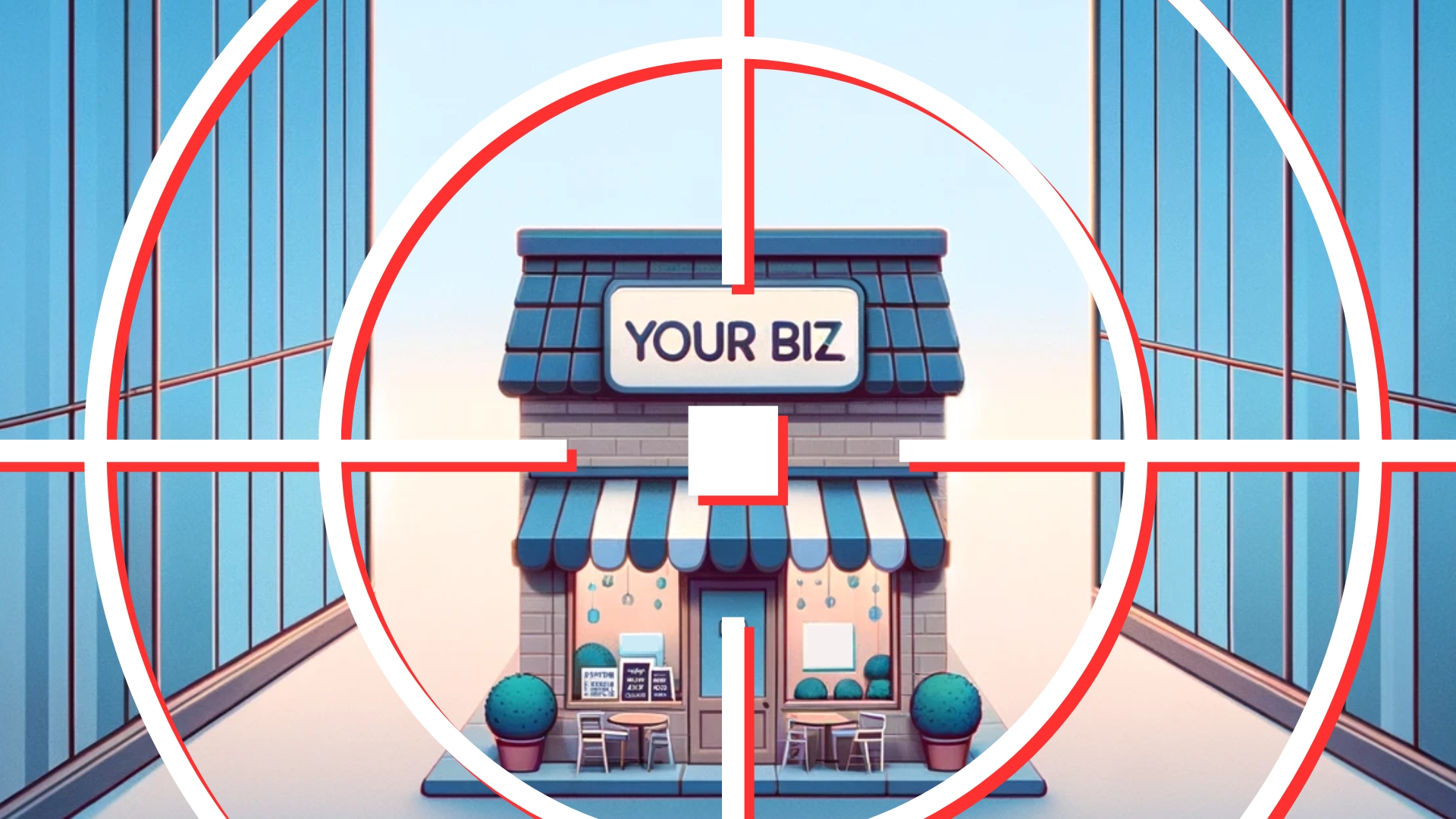Be more productive with these Microsoft Edge features
Improving productivity is a never-ending mission for most business owners and managers.
Whether it’s speeding up tasks or improving communication, every little helps. So it’s crucial to make the most of the tools you already have.
And while you might think of your web browser as just a means to access the internet, it can be so much more than that. Especially if you use Microsoft Edge in Windows 11. It has loads of features that can help supercharge your productivity.
Here are five of our favorites.
- Split Screen for multitasking
Multitasking is a skill every business owner needs, and Microsoft Edge's split screen feature makes it easier than ever. Whether you're comparing web pages, researching multiple topics, or simply keeping an eye on different sites simultaneously, split screen lets you view two pages side-by-side within the same tab. It's like having two windows open at once, but without the clutter. - Vertical Tabs for streamlined navigation
Too many tabs? Yeah… we understand that. Microsoft Edge's vertical tabs offer a fresh perspective on tab management. By stacking tabs vertically along the side of the browser window, you can easily navigate between open tabs and access essential controls like close and mute. - Workspaces for seamless collaboration
Collaboration is key in any business, and Microsoft Edge's Workspaces feature makes it easier than ever to work well with colleagues or clients. Create a workspace with a collection of open tabs, then share it with others via a simple link. It means they can open multiple tabs with one click. It's perfect for brainstorming sessions, project management, or team presentations. - Collections for organized research
Gathering information from the web is a common task. Microsoft Edge's Collections feature makes this easier, allowing you to easily save and organize text, images, and videos from web pages into custom collections. Stay organized, focused, and productive. - Immersive Reader for distraction-free reading
When you need to focus on reading an article or document online, distractions on the page can be a pain. Microsoft Edge's Immersive Reader feature provides a clutter-free reading experience by removing ads, links, and other interruptions. Customize the text size, spacing, and color scheme to suit your preferences, and even have the content read aloud for hands-free reading.
If your business doesn’t already use Microsoft Edge on Windows 11, this could be the perfect time to switch. Can we help you move over? Get in touch.
Is this the most dangerous phishing scam yet?
Picture this: You're going about your day, checking your emails, when suddenly you see a message from a company you trust.
You think, "Great! That’s safe to read”. But hold on just one minute… this email is not what it seems.
It’s part of yet another scam created by cyber criminals to trick you into clicking malicious links or giving up sensitive info. It's called "SubdoMailing," and it's as dangerous as it sounds.
What's the deal?
Just like regular phishing attacks, cyber criminals pretend to be trusted brands.
But here's how it works: These cyber criminals scour the internet for subdomains of reputable companies. You know those extra bits in a web address that come before the main domain? Such as experience.trustedbrand.com. That ‘experience’ bit is the subdomain.
They find a subdomain that the brand is no longer using and is still pointing to an external domain that’s no longer registered.
Then they buy the domain and set up the scam website.
So, you believe you’re clicking on experience.trustedbrand.com… but you have no idea it automatically redirects to scamwebsite.com.
The criminals are sending out five million emails a day targeting people in businesses just like yours.
And because these emails are coming from what seems like a legit source, they often sail right past usual security checks and land in your inbox.
Here’s our advice to keep you and your data safe and sound:
· Be wary of any emails that seem even remotely suspicious. If something looks fishy, it probably is.
· Before clicking on any links or downloading any attachments, take a moment to verify the sender. Look for red flags like spelling mistakes or unusual email addresses.
· Make sure your employees understand the latest phishing tactics and know how to spot a scam. A little knowledge goes a long way in keeping your company safe.
· Consider investing in top-notch security software to keep the cyber criminals at bay. It might seem like an extra expense, but trust us, it's worth it.
As always, if you need help with this or any other aspect of your email security, get in touch.
Is Wi-Fi 7 worth the investment?
You know that staying ahead of the technology curve is vital for all businesses in a highly competitive marketplace. One innovation launched earlier this year is Wi-Fi 7, the next generation of wireless connection.
But what exactly does it offer, and is it worth the investment for your business?
· Lightning-fast speeds: No more buffering and lagging. Wi-Fi 7 brings blazing-fast speeds to keep your business running smoothly.
· Rock-solid connections: Forget all about dropped calls or lost connections. Wi-Fi 7 ensures reliable performance, even in busy environments.
· Futureproofing: Wi-Fi 7 is built to handle the demands of tomorrow's tech. It's future-proofing your business's internet.
Now, here's the million-dollar question: Should you upgrade to Wi-Fi 7? Well, it depends. While Wi-Fi 7 offers some awesome benefits, it can be a bit pricey to upgrade.
The initial investment includes the expense of next-gen routers capable of supporting Wi-Fi 7, which can range from hundreds up to thousands. And there may also be ongoing operational costs, especially if you’re leasing routers from internet service providers.
If you're not ready to dive into Wi-Fi 7 just yet, that’s ok. There are plenty of other ways to improve your business's existing Wi-Fi. From optimizing your current setup to adding extenders or mesh networks, there are options to fit every budget.
We're all about making sure you find the perfect tech solutions for your business to keep you and your team happy. If you’d like to go through your options, get in touch.
Cyber attacks: Stronger, faster and more sophisticated
A new security report has revealed some alarming trends.
First off, cyber attacks are becoming faster than ever. Breakout times (that’s the time it takes for a criminal to move within your network after first getting in) have dropped significantly. We're talking an average of just 62 minutes compared to 84 minutes last year.
This is not good news.
Not only are these attacks faster, but they're also becoming more common. The report has identified a whopping 34 new cyber criminal groups, bringing the total to over 230 groups tracked by the company.
And guess what? These cyber criminals aren't sitting around twiddling their thumbs. They're getting smarter and more sophisticated. The report highlights a new record breakout time of just two minutes and seven seconds. That's barely enough time to grab a coffee, let alone mount a defense.
But here's the real kicker: The human factor is increasingly becoming the main entry point for these cyber attacks.
They will try to get your people to click a link in a phishing email, which will take them to a fake login page. Once your employee enters their real login details, they have inadvertently handed them over.
Or they pretend to be someone your team trusts. This is called social engineering.
So, what can you do to protect your business from these cyber threats?
· Educate your employees
Make sure your team is aware of the latest cyber threats and how to spot them. Regular training sessions can go a long way in preventing costly mistakes.
· Implement strong password policies
Encourage the use of complex random passwords generated and remembered by password managers. Use multi-factor authentication for an added layer of security (this is where you use a second device to confirm it’s really you logging in).
· Keep your systems updated
Make sure all software and systems are up to date with the latest security patches. Cyber criminals often exploit known vulnerabilities, so staying current is key.
· Invest in cyber security software
Consider investing in reputable cyber security software that can help detect and mitigate threats in real-time (we can help with this).
· Backup your data
Regularly backup your data and store it in a secure location. In the event of a cyber attack, having backups can help minimize downtime and data loss.
When it comes to cyber security, it's better to be safe than sorry. If we can help you to stay better prepared, get in touch.
The little things that make a big difference
Microsoft's latest Windows 11 update has dropped, and it's got a small change that could make a big difference to you and your team.
Microsoft has given Copilot, its handy AI assistant, a new place on the taskbar. No more hunting around for the button. Now it sits on the far right of the taskbar, in what we tech folks call the ‘system tray area’.
If Copilot isn't your thing, no worries. You can easily remove it from the taskbar altogether. But having an AI assistant at your fingertips can be a real boost for productivity, so we’d recommend you give it a chance before giving it the boot.
Before you rush to check if your Copilot button has relocated, let's talk details.
First off, this update has been rolling out over the last few weeks.
It’s known as Patch KB5034765 (catchy name) and isn't just about moving buttons around. It's also packed with important security and bug fixes, including a crucial one for Explorer.exe. This was causing some PCs to freeze up when restarting with a game controller attached.
Probably not an issue in your business, but you never know…
There was also a problem with slow announcements from Narrator, the screen reading tool. That’s been fixed.
While this Windows 11 update may seem like small fry, it's these little tweaks that can really streamline your workflow and stop your team from being interrupted by problems while they work.
Has your business switched over to Windows 11 yet? Our team can look at your setup and advise whether you’d benefit from upgrading, or you should stay on Windows 10.
Get in touch and ask us for a tech audit.
And the award for most common phishing scam goes to…
If there’s one thing that’s 100% certain when it comes to protecting your business data, it’s that you need to be aware of phishing emails.
First things first, what exactly is a phishing email? Picture it as a wolf in sheep's clothing, posing as a legitimate communication to deceive unsuspecting recipients. These emails often contain malicious links, attachments, or requests for sensitive data, all disguised as a business or person you already know and trust.
And you know what they say: Knowledge is power. One of the best ways to stay safe is to stay informed. We can do that by looking at the most common phishing emails of last year.
There are three main categories of phishing themes: Major, moderate, and minor.
Major themes
The biggest category is finance-related phishing emails, making up a huge 54% of attacks. These emails often contain pretend invoices or payment requests, aiming to lure recipients into giving away financial information.
Following closely are notification phishing emails, making up 35% of attacks. These emails prey on urgency, claiming your password is about to expire or you must take some urgent action.
Moderate themes
Document and voicemail scams take center stage here, accounting for 38% and 25% of attacks respectively. These tactics involve deceptive files or messages designed to trick you into compromising your security.
Minor themes
While less common, minor phishing themes still pose a risk to people who don’t know what to look out for. These include emails related to benefits, taxes, job applications, and property.
Why should you be concerned about phishing emails? Falling victim to these scams can have serious consequences, including financial loss, data breaches, and damage to your company's reputation. It's essential to educate your employees about the dangers of phishing and put in place robust cyber security measures to protect your business.
Awareness and vigilance are your best defenses against phishing attacks. By staying informed, training your employees, and using strong security protocols, you can safeguard your company's valuable assets from cyber threats.
We help businesses like yours stay safe. If you’re not 100% sure you’re fully protected… let’s talk.
Before you replace your slow PCs…
You rely on your team to be efficient and productive. But slow and sluggish computers can make it difficult for them to do their work – and could affect you personally too. Which impacts your business's overall performance.
Before you jump to the (expensive) conclusion that you need to replace your PCs, there are several ways you can increase computer performance on Windows 10 and 11.
Here are just a few…
Restart your computer
Yes, it might be our favorite advice as IT support professionals, but a basic shutdown and restart can work wonders. Restarting your computer clears background processes, applications, and memory data. This often resolves common performance issues, especially if your computer has been running for a while.
Manage startup apps
Many apps register themselves to start automatically with Windows 11, and this can slow down your computer's startup process. To regain some speed, consider disabling unnecessary startup apps:
· Open Settings
· Click on Apps
· Select the Startup page
· Sort apps by their "Startup impact"
· Turn off the toggle switch for any unnecessary apps
· Restart your computer
This will prevent these apps from launching automatically during startup and save valuable system resources.
Disable restartable apps
Windows 11 has a feature that saves and restarts certain applications when you reboot your computer. While it can be convenient, it may not be ideal for performance. To turn off this feature:
· Open Settings
· Click on Accounts
· Go to the Sign-in options page
· Turn off the "Automatically save my restartable apps and restart them when I sign back in" toggle switch
Disabling this feature can help improve your computer's speed, especially if you have many applications that you don't use regularly.
Uninstall unnecessary apps
Unused or unnecessary apps can clutter your system and slow it down. To remove them:
· Open Settings
· Click on Apps
· Select the Installed apps page
· Choose the app you want to uninstall and click the Uninstall option
· Follow the on-screen directions if necessary
By removing apps you don't need, you'll free up space and resources for better performance.
Always be cautious about what software you install on your computer. Poorly designed or outdated applications can have a negative impact on performance. Stick to reputable apps (preferably those available in the Microsoft Store) because they have thorough reviews for both security and performance.
Before installing any software, do some online research to check for user experiences and potential issues. Trustworthy sources and well-known companies are your best bet.
Take the time to optimize your existing Windows computers before you consider upgrading your devices. Of course, rather than doing all of this yourself, why not get our team to do it for you. They can check every aspect of your computers and network to look for other hidden problems. Get in touch.
Encryption: The Crucial Role Of Safeguarding Business Data
Imagine the repercussions of a security breach in your business data.
Would it:
a) Plunge the company into disarray, risking everything? Or…
b) Pose a manageable inconvenience that, thankfully, you had foreseen?
The determining factor between these scenarios is encryption. If you haven't implemented it yet, it's a crucial step that should be taken promptly.
Explore our latest video to gain insights into the significance of encryption and why it's imperative for your business.
Which ransomware payment option is best? (Hint: none)
Picture this: Your business gets hit by a ransomware attack, and your valuable data is locked away by cyber criminals demanding a huge ransom fee.
You can’t afford to pay it. But there's a twist – just like those "buy now, pay later" schemes, some ransomware gangs are offering victims payment extension options.
Recent research reveals that ransomware groups are getting creative with their extortion strategies. One group is even offering victims various choices when it comes to their ransom demands. These "choices" include:
Paying to delay the publication of their stolen data, with a standard fee of $10,000… or paying to have their stolen data deleted before it's made public.
The exact amounts charged are often negotiated with victims, adding a chilling dimension to the whole ordeal.
To increase the pressure on victims, these ransomware groups have added some terrifying features to their web sites. These include countdown timers displaying how much time businesses have before their data is released, view counters, and even tags revealing the victim's identity and description.
It's all designed to make victims feel cornered and more likely to give in to the demands.
You might be tempted to pay that ransom to protect your business data. Not so fast. Paying is always a bad idea and here’s why…
Paying doesn't guarantee that you'll get your data back or that the cyber criminals won't demand more money later.
By paying, you're essentially funding criminal activities, encouraging them to continue their attacks on others.
Paying a ransom might even get you into legal trouble, as some governments have made it illegal to pay cyber criminals.
So, what can you do to safeguard your business from falling victim to ransomware?
- Ensure you have regular, secure backups of your data. This way, you won't be at the mercy of cyber criminals.
- Educate your staff about the risks of ransomware and train them to recognize phishing emails and suspicious links.
- Invest in robust cyber security software and keep it up to date.
- Keep your systems and software updated with the latest security patches.
- Segment your network to limit the spread of ransomware if one device gets infected.
- Develop a clear incident response plan, so you know exactly what to do if you're ever hit by a ransomware attack.
Paying cyber criminals rarely makes things better, and we’re seeing businesses that do pay become targets time and time again. Instead, invest in the proactive measures above to help you stay secure. And if we can help you with that, get in touch.
Bridging the trust gap between your employees and AI
You've probably been considering how to harness the potential of AI to boost your company's efficiency and productivity.
But there's a small problem. A recent study revealed something fascinating but not entirely surprising: A trust gap when it comes to AI in the workplace.
While you see AI as a fantastic opportunity for business transformation, your employees might be skeptical and even worried about their job security.
Here's a snapshot of the findings:
· 62% of C-suite executives welcome AI, but only 52% of employees share the same enthusiasm.
· 23% of employees doubt their company’s commitment to employee interests when implementing AI.
· However, 70% of business leaders believe that AI should include human review and intervention, showing they view AI as an assistant rather than a replacement.
Now that we understand the situation, how can you introduce AI gently and reassure your employees that their roles are safe?
Start by having open and honest conversations with your employees. Explain why you're introducing AI and how it will benefit both the company and individual roles. Show them that AI is meant to be a helping hand, not a jobs terminator.
Invest in training that helps your people acquire the skills they need to work alongside AI. Make them feel empowered by showing that it can make their jobs more interesting and valuable.
Emphasize that your AI initiatives are designed to enhance human capabilities, not replace them. Let your team know that it will handle repetitive tasks, allowing them to focus on more creative and strategic aspects of their work.
Develop clear guidelines for responsible AI use in your business. Highlight your commitment to ethical practices and ensure that employees are aware of these policies.
Involve your employees in the implementation process. Seek their input, listen to their concerns, and make them part of the solution. This shows that you value their contributions.
Encourage a culture of continuous learning. Let your employees know that they'll have opportunities for ongoing education and development, ensuring they stay relevant and valuable in the AI-driven workplace.
Introducing AI into your workplace doesn't have to be a cause for concern among your employees. AI is a tool for growth and innovation, not a threat to job security.
If we can help you introduce the right AI tools in the right way, get in touch.
Don’t think your business is a target? Think again
You might think that cyber criminals are only interested in large companies or those with huge financial assets. After all, that's where the big bucks are, right?
Think again.
Recent reports have shown that cyber criminals are casting their nets wide, targeting businesses of all sizes, from mom-and-pop stores to global enterprises. And they're doing it with the help of something called "botnets."
You may have heard about the rise of malicious botnets, and you're probably wondering, "what on earth is a botnet, and why should I care?" Botnets are the secret weapons of cyber criminals. They're armies of compromised devices, all under the control of a single, malicious puppeteer. These can be anything from your computer to your smart refrigerator. Yes, even your refrigerator can be turned into a cyber weapon.
A new report observed "massive spikes" in the activity of these botnets, with over a million devices involved in malicious activities at one point. To put it into perspective, that's a hundred times the usual levels of botnet activity.
Usually, there are around 10,000 devices doing naughty stuff each day, with 20,000 being the highest number researchers had seen. But in December 2023, things got crazy. The number shot up to 35,144, and two weeks later, it rose even further to 43,194. That's a lot of compromised devices.
And it didn't stop there; the researchers saw the biggest spike yet, hitting a whopping 143,957 distinct devices being used at the same time. In fact, on January 5 and 6 there were spikes of more than a million devices!
Why are they doing this? These botnets are being used to scan the internet, searching for weaknesses in websites, servers, and even email systems.
Think of the internet as a fortress with many doors and windows. These cyber criminals are looking for unlocked doors and open windows to sneak in. They focus on specific "ports" that serve as entry points.
What can you do to protect yourself from these cyber threats?
It's all about strengthening those doors and windows. Here are a few simple steps:
· Keep your software, operating systems, and applications up-to-date. Regular updates often fix vulnerabilities.
· Install a good firewall and reliable antivirus software to protect your devices.
· Educate your employees about cyber security best practices, such as avoiding suspicious links and emails.
· Enforce strong, unique passwords for all your accounts and devices.
· Regularly back up your data to prevent loss in case of a cyber attack.
· Keep an eye on your network for any unusual activity.
· Consider hiring a cyber security expert (that’s us) to assess and enhance your security measures.
If we can help you keep your business better protected, get in touch.
This new search feature in Edge is a revolution
Microsoft’s at it again, presenting us with new features week after week. This time it’s all about making our online searches smarter and more efficient in the Edge browser. If you’ve been on the fence about switching to it, this might just be the push you need.
Edge has a cool new feature, as revealed by Mikhail Parakhin, CEO of Advertising and Web Services at Microsoft. Imagine this: you're searching for something important for your business – maybe it's market research or the latest trends in your industry. You type in your query, and you get results from not one but two search engines at the same time.
How does it work?
Let's break it down. Say Bing is your default search engine. Now, when you hit the search icon, you won’t just see Bing's results, you'll also get a peek at what Google (or your alternative search engine of choice) has to offer. This dual view works both ways, ensuring you're not missing out on any valuable information.
In business, information is gold. Having access to comprehensive search results means you're more likely to find the most relevant, diverse, and valuable information. No more switching between browsers or tabs to compare search results – Edge now does that for you in a single view.
Some people have raised concerns about potential visual clutter from combining two engines' results. It's a valid point, and thankfully, Microsoft is listening. Parakhin hinted at the possibility of customizing your 'backup' search engine to streamline the experience. While the sidebar's width is currently fixed, there's an openness to explore deeper customization options soon.
This feature in Edge is quite a lure. It simplifies the task of searching, making research quicker and more effective. You get the best of both worlds without the hassle of juggling multiple windows.
And it’s more than just a convenience; it's a step towards smarter, more efficient browsing, especially for us in the business community. It demonstrates Microsoft's commitment to improving user experience and staying competitive in the browser game.
For current Edge fans, this is an exciting upgrade. For everyone else, it's a compelling reason to consider making the switch.
Need a hand finding time-saving tools for your business? Get in touch.












